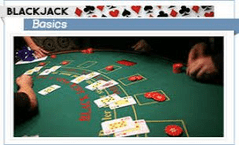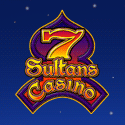Basic Blackjack Rules

The origin of blackjack has eluded researchers and continues to be a hot debate to this day. As such, there hasn't been a clear consensus up to now; however, most studies agree that it has its roots somewhere in France, where it was known as Vingt-et-Un, meaning 21. Some theories also state that it was invented by the Romans.
Wherever the game was created, it has gained tremendous popularity and has become a household name in both online and offline gambling establishments today. To have a shot at winning, you'll need to learn all the basic blackjack rules, which are discussed below.
Blackjack Rules

Just like all other casino games, blackjack comes with a set of rules that every gambler should have at their fingertips. These will help you to survive throughout the game and possibly walk away with extra cash:
- This game can use one to eight 52 card decks.
- The Aces are counted as 1 or 11 points, 2 to 9 according to pip value (two through ten) while tens and face cards count as ten points.
- A hand's value is the sum of the point values of individual cards with the exemption of a 'blackjack'. The highest hand made up of an ace and any 10-point card - this outranks all other 21-point hands.
- When the players have placed their bets, the croupier issues two cards to each gambler and two to himself - one dealer card is dealt face up; the facedown card is known as the 'hole card'.
- If the dealer has an ace, they'll offer 'insurance', a side bet, which pays 2 to 1 if the hole card is any 10-point card. Note that insurance wagers are optional and can't go beyond half the original bet.
- Another one of blackjack rules states that in case a croupier has a 10 or an ace displaying, after offering insurance, then they will look at their hole card to see if it's a blackjack. If it is, the croupier turns it over.
- A dealer's blackjack simply tells you that all wagers except insurance have lost. However, if you also have a blackjack, that's referred to as a push - the dealer resolves insurance bets then.
- Any player without a 'bust' wins when a dealer goes over 21, but if he/she doesn't the higher point total between the gamer and dealer wins.
- Winning bets pay out equally, except a winning player blackjack, which pays 3 to 2. Some betting operators usually pay less. That's amongst the blackjack rules that favor the house.
Player Options
Keep in mind that the gameplay starts with the player to the left side of the dealer. Players have the following choices during the gameplay:
- Stand: Just as the name states, you hold and end your turn.
- Hit: You're allowed to draw another card. If your total points go beyond 21 or 'bust' you lose.
- Double: You could double your bet and get one more card.
- Split: In case you have a pair or any two 10-point cards, you may double your wager and separate your cards into two individual hands. Here, you'll automatically receive a card for each hand, where you can continue playing normally. Note that you can keep re-splitting up to a total of 4 hands. Re-splitting aces may not always be allowed.
- Surrender: Here, you forfeit half your wager and keep the other half. This particular option is only viable on the initial two cards. Depending on the operator's blackjack rules, sometimes this isn't allowed.






